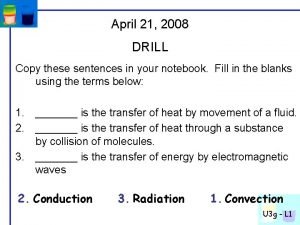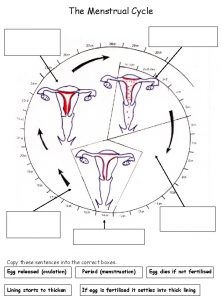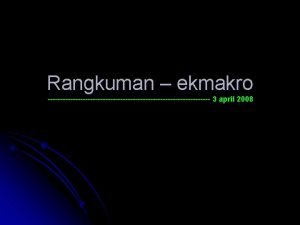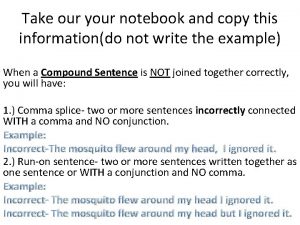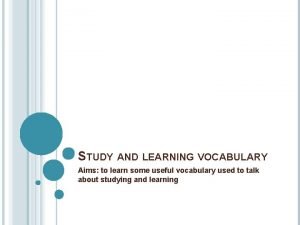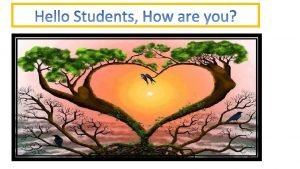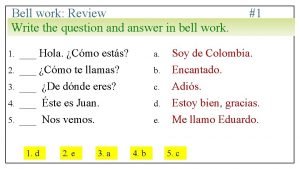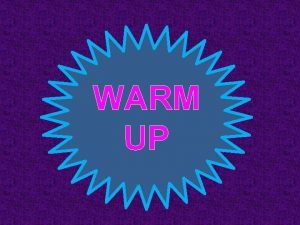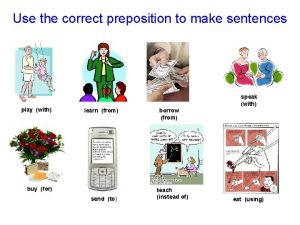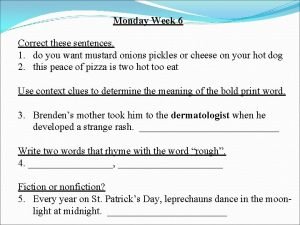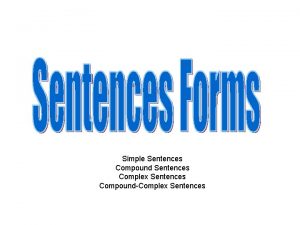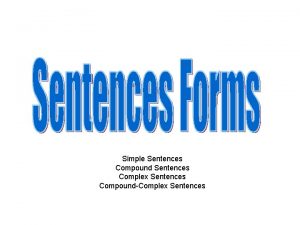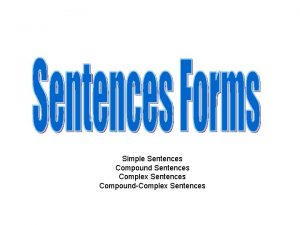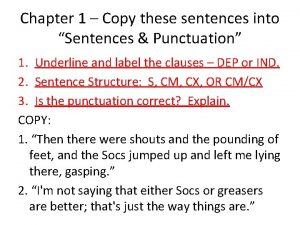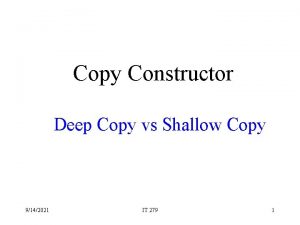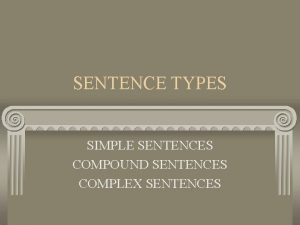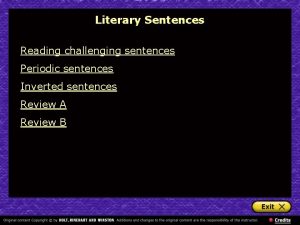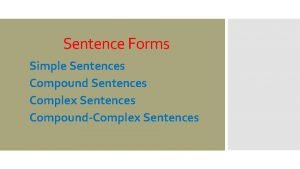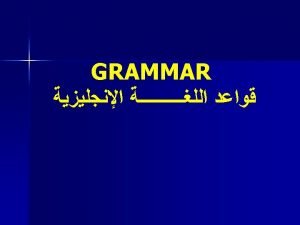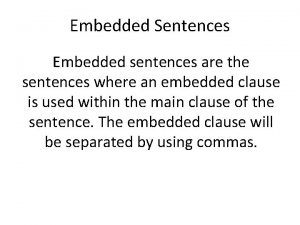April 21 2008 DRILL Copy these sentences in
















- Slides: 16

April 21, 2008 DRILL Copy these sentences in your notebook. Fill in the blanks using the terms below: 1. _______ is the transfer of heat by movement of a fluid. 2. _______ is the transfer of heat through a substance by collision of molecules. 3. _______ is the transfer of energy by electromagnetic waves 2. Conduction 3. Radiation 1. Convection U 3 g - L 1

UNIT 3 – Engineering Design Engineering, the systematic application of mathematical, scientific, and technical principles, produces tangible end products that meet our needs and desires. U 3 g - L 1

UNIT 3 – Engineering Design a. b. c. d. e. f. Getting familiar with the Big Idea The Design Process Core Technologies Mechanical Technology Electrical Technology Fluid Technology g. Thermal Technology h. Optical Technology i. Materials Technology U 3 g - L 1

Fluid Technology PURPOSE OF SUB-UNIT • To familiarize students with the functioning and applications of thermal technology systems. U 3 g - L 1

Thermal Technology What is technology? The application of knowledge, tools, and skills to solve problems and extend human capabilities. What is a technology system? A Technology System is a group of subsystems working together to solve problems and extend human capabilities. U 3 g - L 1

Fluid Technology • There are several engineering resources (core Core technologies) that are the. Mechanical “building blocks” of all Technologies technology systems. Structural Electrical Electronic Thermal Fluid Optical Bio-Tech Material U 3 g - L 1

Thermal Technology These are Infrared images of water leaving a faucet. Which is cold? Which is hot? How can you tell? U 3 g - L 1

Thermal Technology • The technology of producing, storing, controlling, transmitting and getting work from heat energy. Example applications: • Furnace, • Hot water heater, • Toaster, • Insulation, • Heat exchanger, • Refrigerator, • Hot air balloon, • Fan. U 3 g - L 1

• The universe is made up of matter and energy. • Matter is made up of atoms and molecules – Molecules are groups of atoms • Energy causes atoms and molecules to always be in motion. They either: – Bump into each other – Vibrate back and forth • The motion of atoms and molecules creates a form of energy called heat (or thermal energy) that is present in all matter. U 3 g - L 1

• Thermodynamics is the science dealing with internal energy, heat, and work. • Even in the coldest voids of space, matter has a very small, but still measureable, amount of heat energy. • Which contains the most heat: an iceberg or a boiling pot of water? • Why? U 3 g - L 1

Back to Atoms: • When energy is applied to an atom, it becomes more excited. • As the excitation increases, the electron cloud grows. • Eventually, a photon (a particle of light) is emitted. • The color of the light is determined by the level of excitation – red, orange, yellow, blue, white (hottest) • An infrared camera captures these photons that are not visible to the human eye. U 3 g - L 1

• Energy can take on many forms and can change from one form to another. • Many different types of energy can be converted into heat energy: – Light, electrical, mechanical, chemical, nuclear, sound, and thermal energy can each cause a substance to heat • Put energy into a system and it heats up – When cold, jumping up and down or chattering teeth warm us up • Take energy away and it cools – When hot, sitting still cools us down U 3 g - L 1

• A ball bouncing on the ground is what type of energy? – MECHANICAL – the object moves • When we bounce it, would it heat up? Before ball bounces After ball bounces • After a car has been on the road a while, the rubber on the tires heats up and sounds sticky when the car U 3 g - L 1 slows down.

• Thermal energy can be transferred to other objects causing them to heat up. • Heating a pan of water: – Heat from the stove causes the molecules in the pan to vibrate faster. – The pan heats up. – Heat from the pan causes water molecules to move faster and heat up. – Heating something up – you are just making its molecules move faster. U 3 g - L 1

• Electrical energy is converted into thermal energy when you use objects such as: – Heating pads, electrical stove elements, toasters, hair dryers, or light bulbs • Combining certain chemicals produces heat: – The foods we eat is converted into heating our bodies, hand or foot warmers • Light from the sun is converted to heat as the sun’s rays warm the earth’s surface. • Energy from friction creates heat (car brakes). U 3 g - L 1

1. Identify 5 thermal technologies not mentioned in class today • (Remember, a thermal technology produces, stores, controls, transmits or gets work from heat energy) 2. Identify the problem that the technology system solves 3. List the technological subsystems that are used in the technology 4. Identify the technology that preceded it (i. e. what was used before the technology was invented? ) U 3 g - L 1
 Copy these sentences
Copy these sentences Copy these sentences to the correct boxes below
Copy these sentences to the correct boxes below 3 april 2008
3 april 2008 2008 2008
2008 2008 Copy it in your notebook
Copy it in your notebook Copy and complete the sentences
Copy and complete the sentences Correct the mis collocations in these sentences
Correct the mis collocations in these sentences A lad went to a famous teacher
A lad went to a famous teacher Que significa write these sentences into questions
Que significa write these sentences into questions Complete the sentences with these verbs
Complete the sentences with these verbs Circle the correct preposition in these sentences
Circle the correct preposition in these sentences Which of the experiences do these sentences describe
Which of the experiences do these sentences describe Write sentences with these words
Write sentences with these words In each of the following sentences
In each of the following sentences Translate these sentences into english
Translate these sentences into english Correct these sentences
Correct these sentences Translate following sentences into english
Translate following sentences into english
